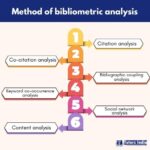How to Conduct a bibliometric analysis?
Introduction
The research process has increasingly diversified with the diversity of the study fields and science. Studies conducted in various fields have become repetitive, researchers often face challenges in defining concepts and setting the course of their work, and it is possible that they will lose their way if they are unable to identify reputed studies or significant researchers. This is where bibliometric analysis can be of assistance.
Various definitions of bibliometric analysis exist. Merigó and Yang (2017) gave the recent definition of bibliometric analysis as ‘A quantitative study of bibliographic material (data) and provides a general picture of a research field that research papers, authors, and fields can include categories.’ Bibliometric analysis filters out research by offering an estimate of their impact. In addition, bibliometric analysis offers a different perspective in a field of research; it can examine the relationship between recent studies and their analyses. Also, bibliometric analysis can form a base for a comprehensive review. Thus, bibliometric research allows one to engage in various activities to avoid bias and study choices. However, one must note that bibliometric analysis cannot replace traditional research methods and can only be used as an adjunct (Brika, 2021).
Steps for conducting a bibliometric analysis
There are two broad techniques for conducting a bibliometric analysis- performance analysis and science mapping. While performance analysis gives importance to research contributions to a specific field, science mapping focuses primarily on analysing the relationships between the research constituents. Here are the general steps involved in conducting bibliometric analyses:
1.Defining the research question:
Defining a research question gives clarity on what a scholar wants to research and analyse. During this process, one should identify the study areas, research topics and timeframe they want to analyse.
2. Data collection:
Relevant data is collected from reliable sources like articles, books, patents, and conference proceedings, from online databases or search engines. Various databases like Web of Science, Google Scholar or Scopus can be helpful.
3. Data pre-processing:
Subsequent to the data collection, the data is pre-processed by cleaning and standardising it. Duplicates are removed, author names are standardised, and the data is formatted for analysis.
4. Data analysis:
Bibliometric software is available that helps with the data analysis. Examples include VOSviewer, BibExcel, or CiteSpace. The number of citations, publications and co-authorship networks are analysed, and the frequently used keywords and topics are identified.
5. Result interpretation:
The results are interpreted after data analysis, which answers the research question. Trends, patterns and gaps in the literature are identified, and conclusions are drawn from the analysis.
6. Result communication:
The results of the analysis are presented clearly and concisely. Finally, the section includes a written report explaining the methodology and findings of the analysis, along with graphical representations like tables, charts and graphs (Donthu, 2021).
Conclusion
Bibliometric analysis is a quantitative study that provides a general picture of a field of research. It finds its applications in various disciplines like management, business and medicine. Conducting bibliometric analysis requires a combination of data collection, data processing, and data analysis skills. Therefore, it is vital to use appropriate software and tools to ensure the accuracy and reliability of the results.
Tutors India has a trusted team of experts from reputed universities with experience in research and academic writing. It assists students in their dissertations at various stages, including statistical analysis, ensuring their work is error-free and aligns with the university guidelines.
References:
- Brika SKM, Algamdi A, Chergui K, Musa AA and Zouaghi R (2021) Quality of Higher Education: A Bibliometric Review Study. Front. Educ. 6:666087. doi: 10.3389/feduc.2021.666087.
- Donthu, N., Kumar, S., Mukherjee, D., Pandey, N., & Lim, W. M. (2021). How to conduct a bibliometric analysis: An overview and guidelines. Journal of Business Research, 133, 285–296.

 Next Post
Next Post